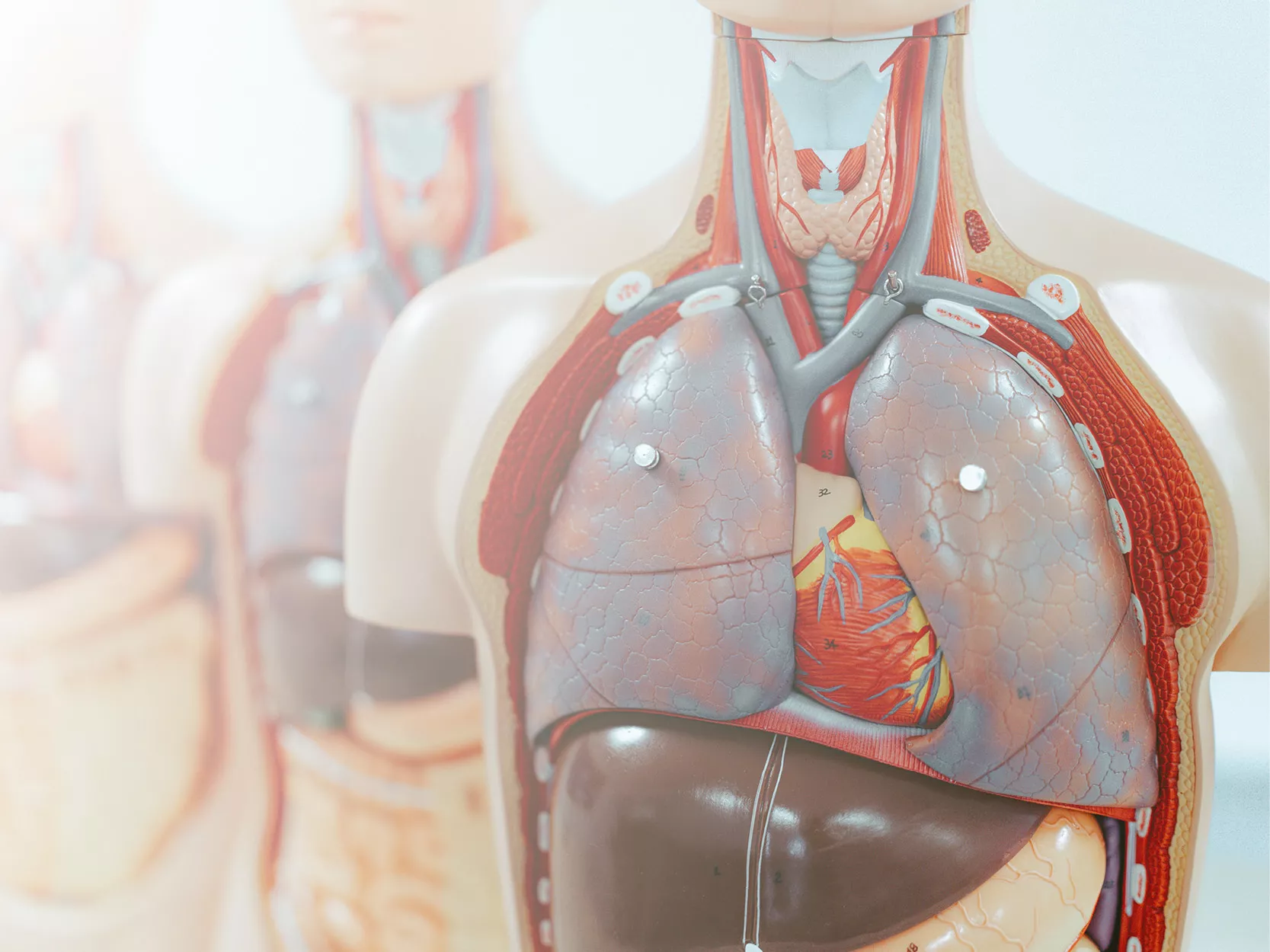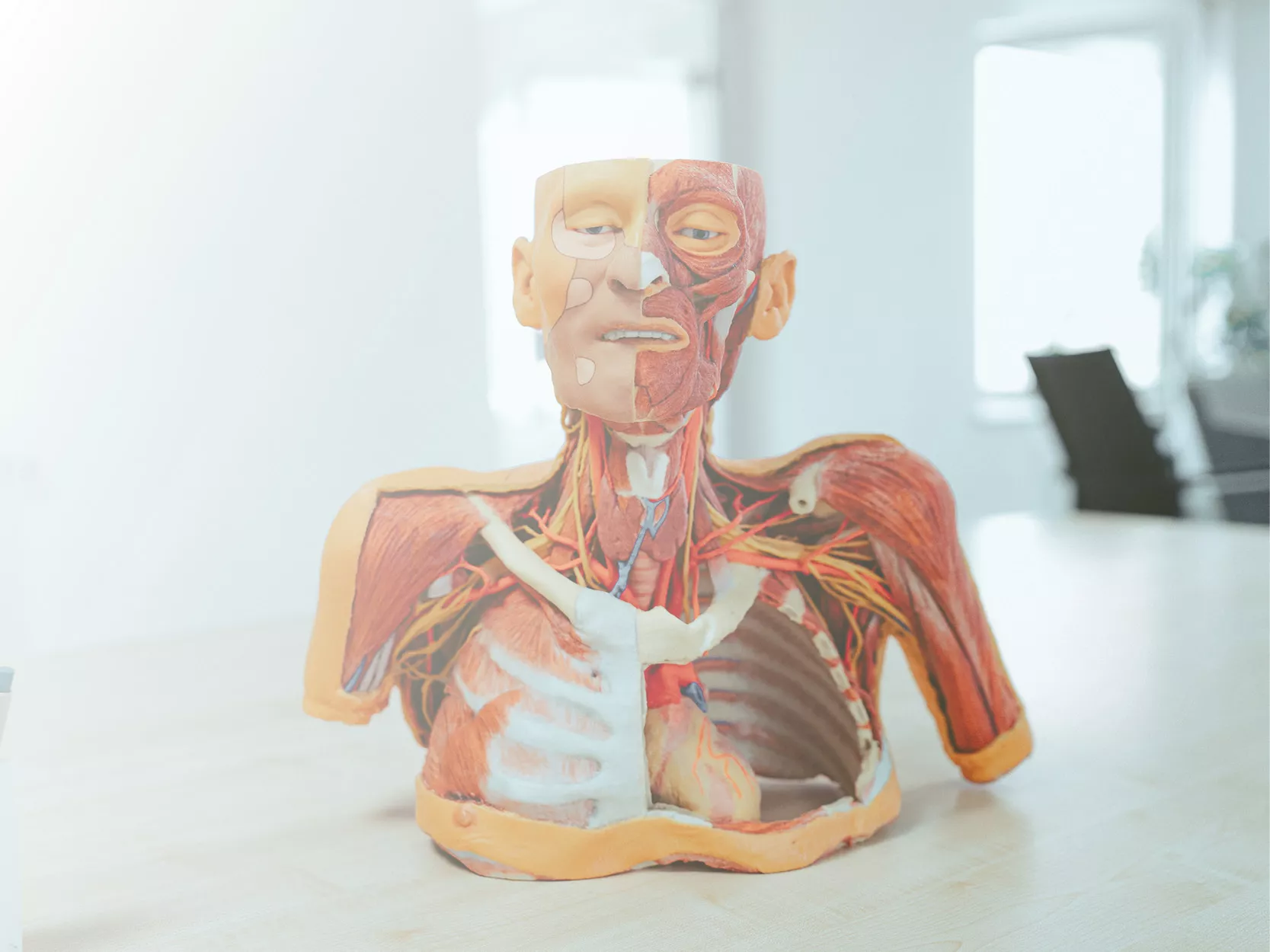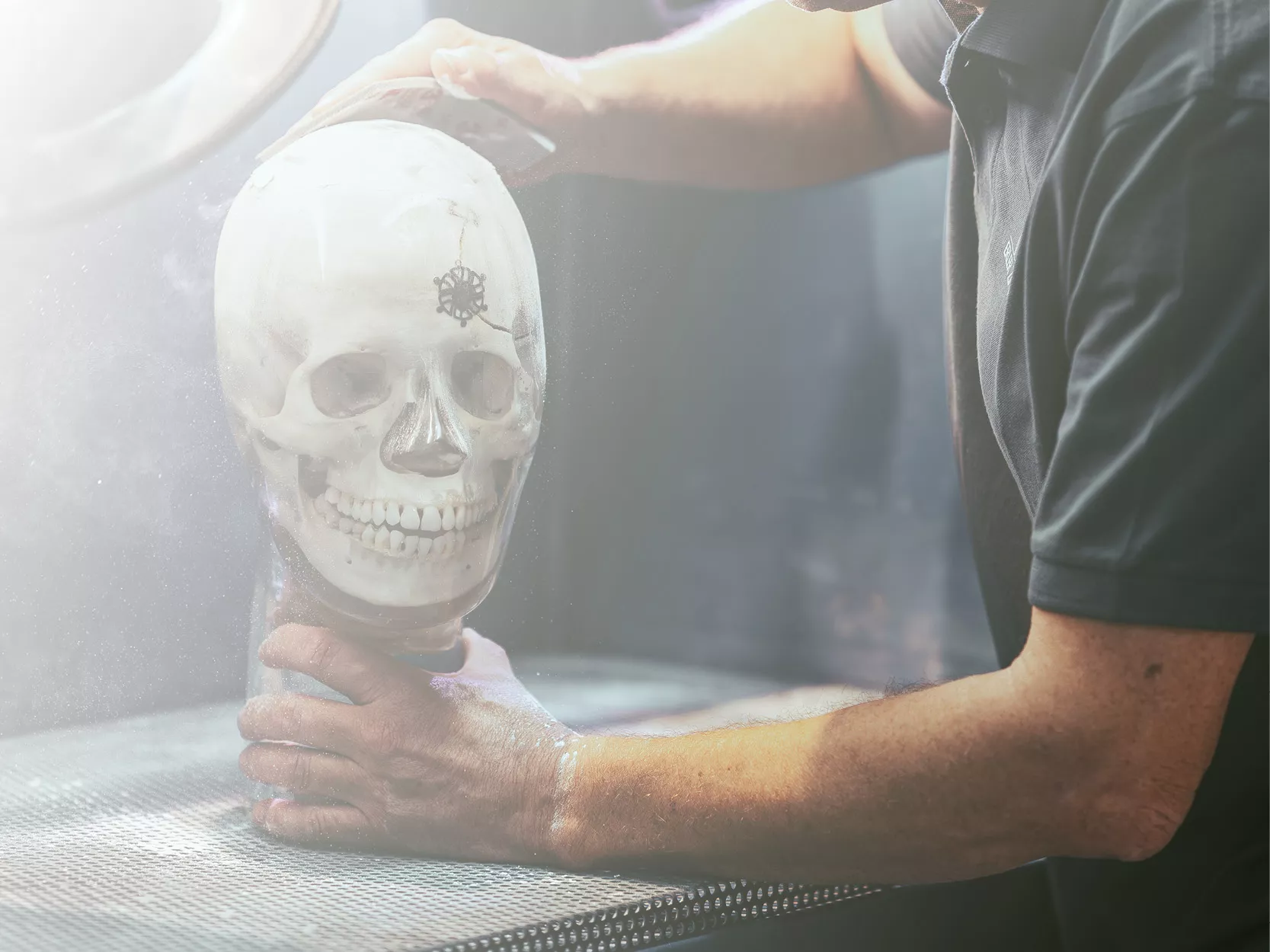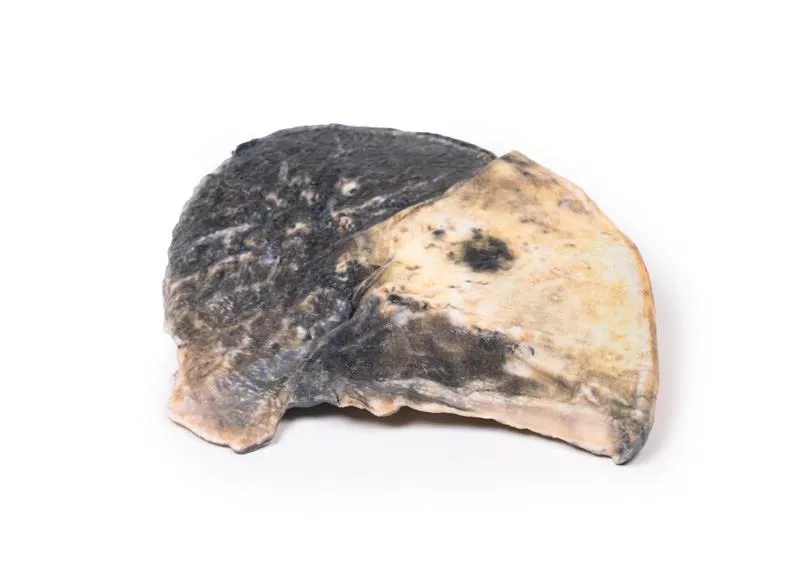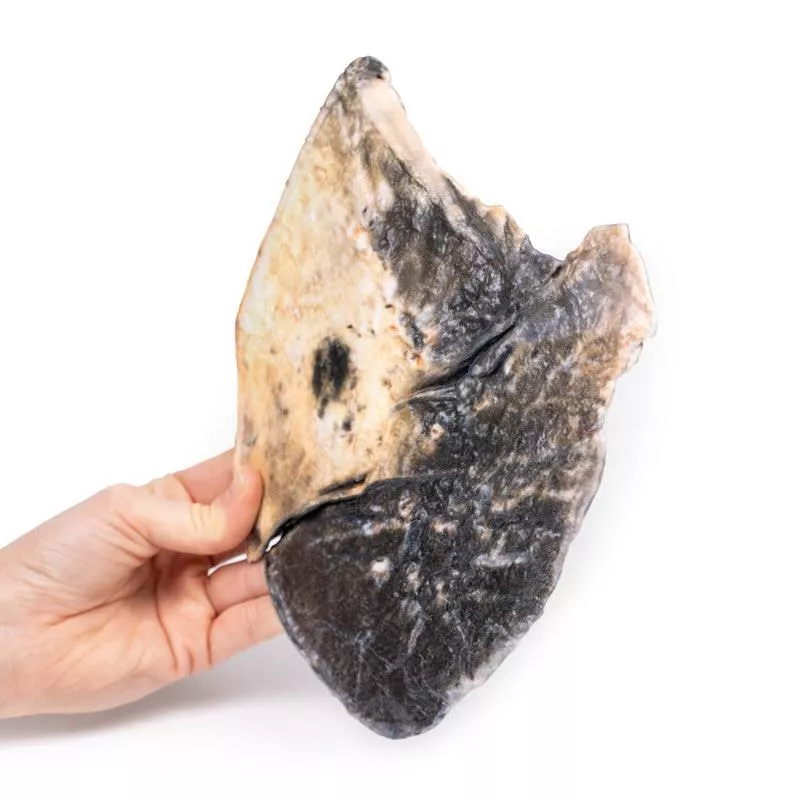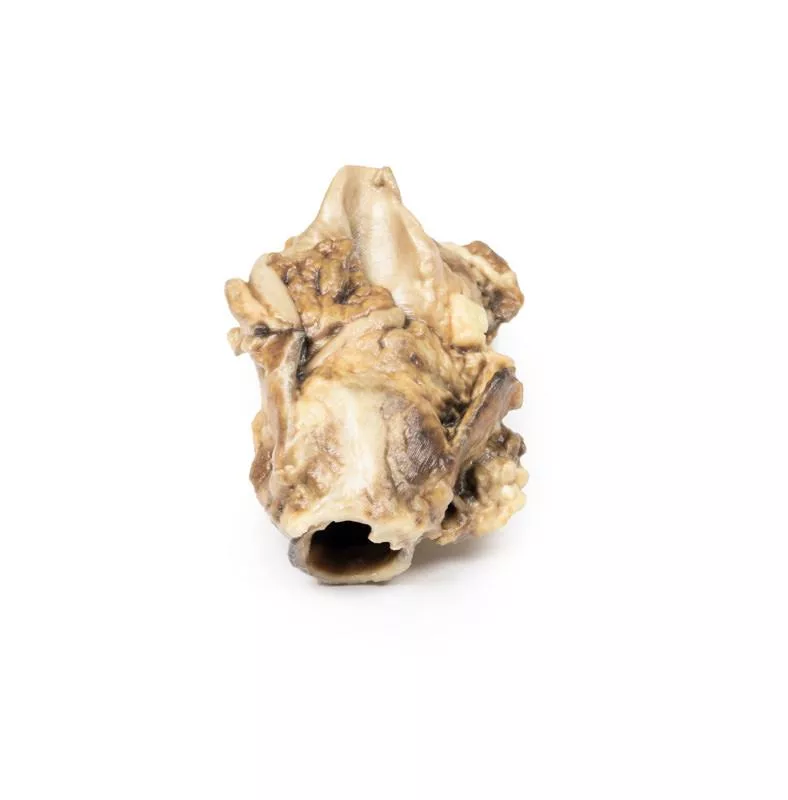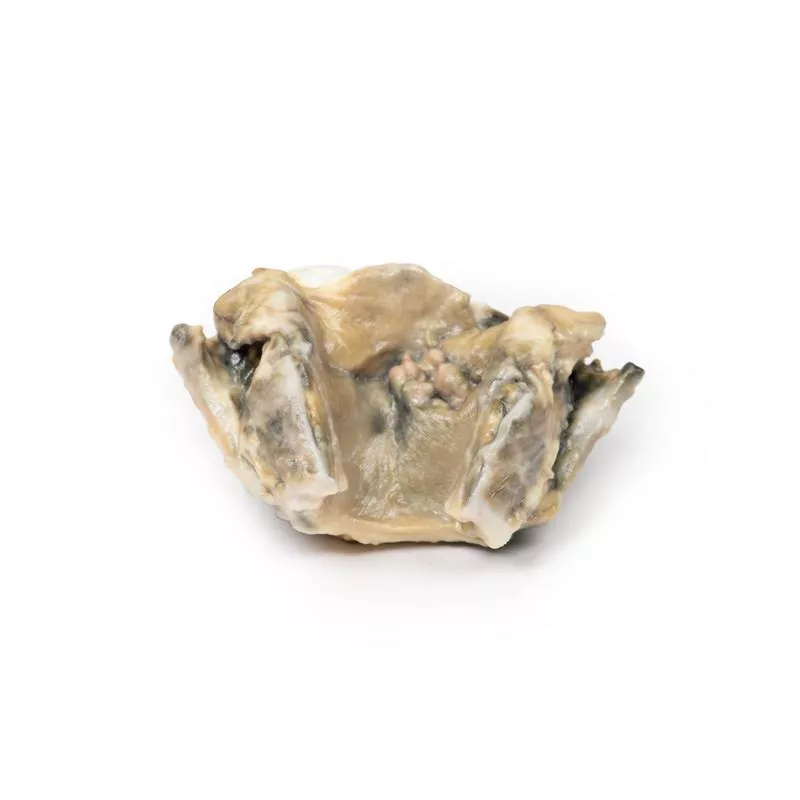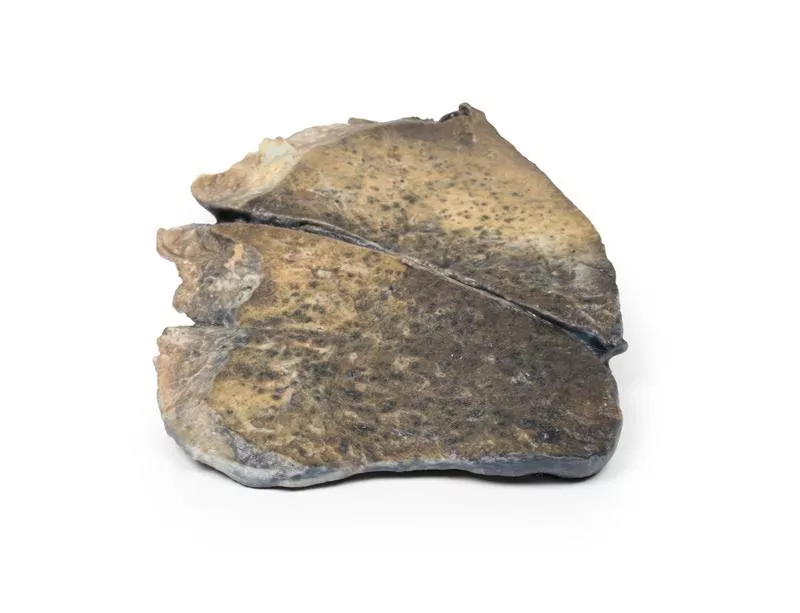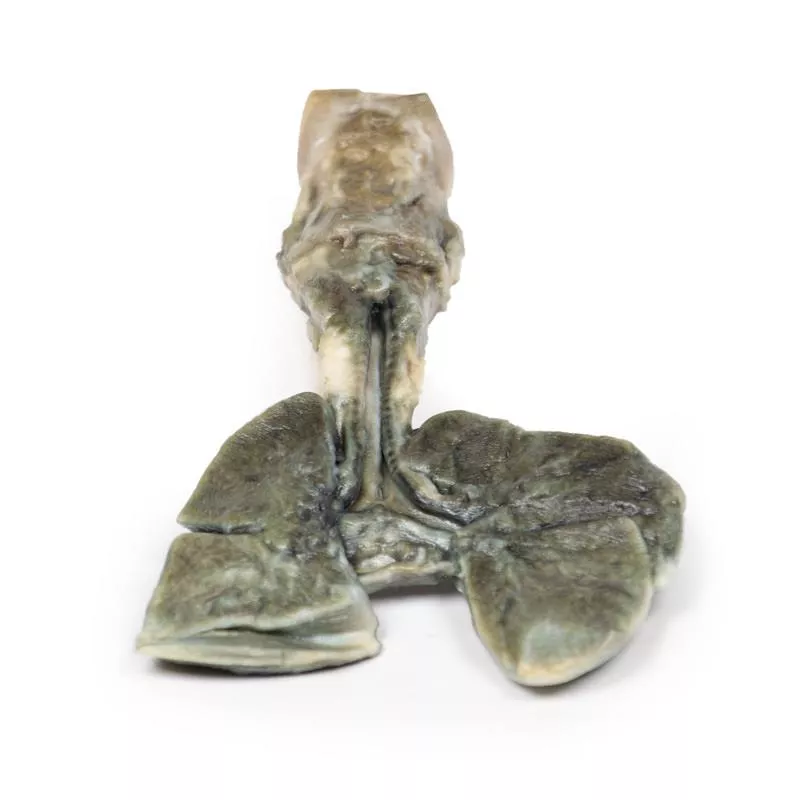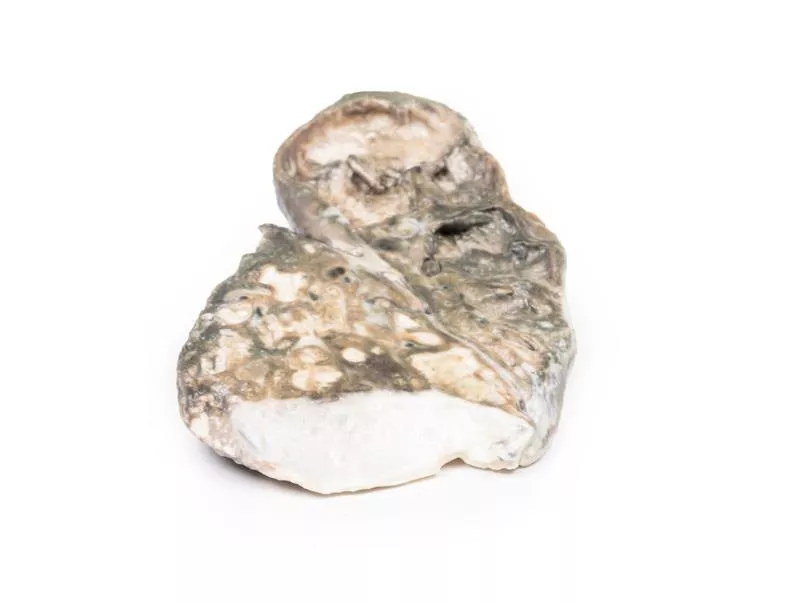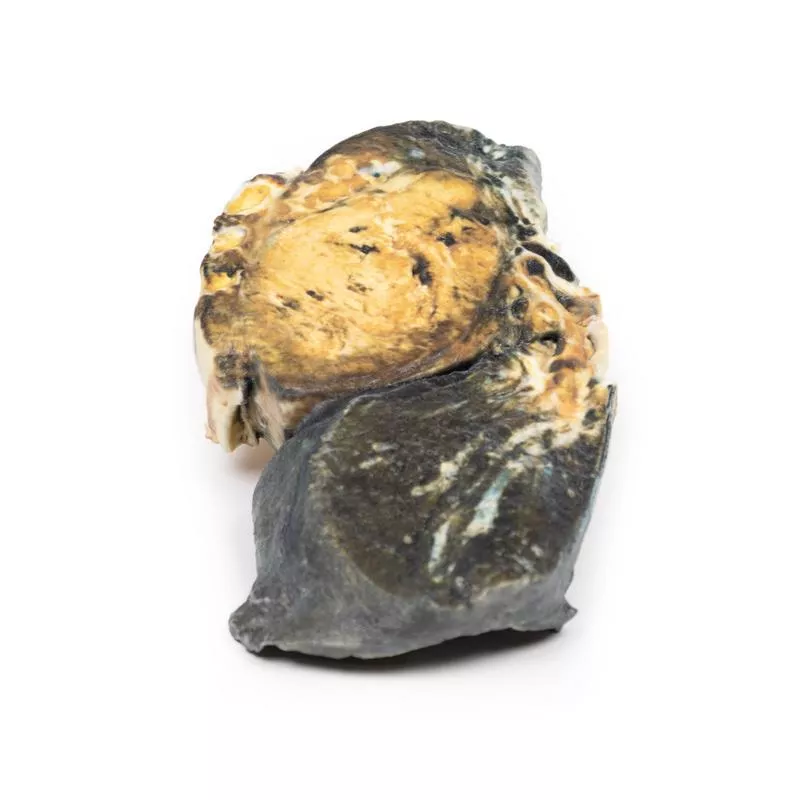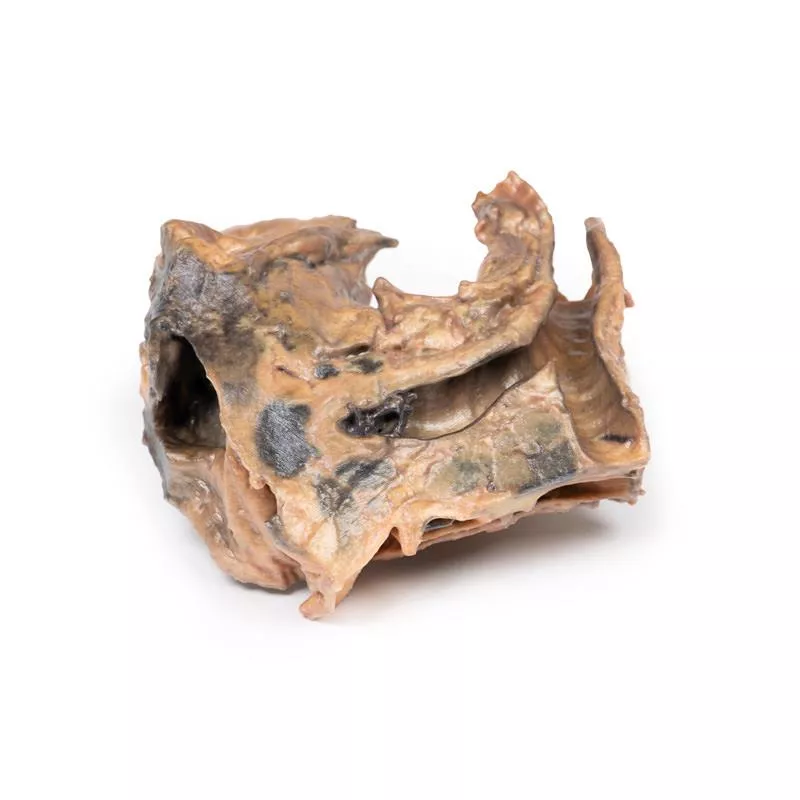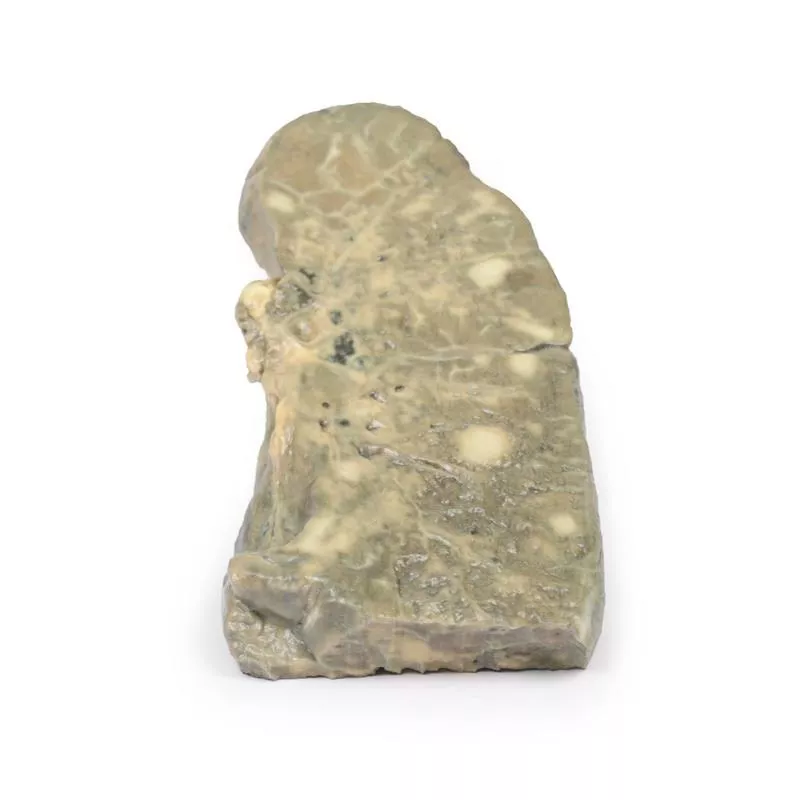Produktinformationen "Lobar pneumonia"
Klinische Vorgeschichte
Für dieses Präparat liegt keine klinische Vorgeschichte vor.
Pathologie
Es handelt sich um einen parasagittalen Schnitt der rechten Lunge, in dem die Grenzen zwischen den drei Lappen sichtbar sind. Der obere und mittlere Lappen sind deutlich gestaut und hyperämisch, was ihre dunklere Färbung erklärt. In der linken Lunge finden sich kleinere Herde ähnlicher Veränderungen.
Weitere Informationen
Lobärpneumonie ist eine Form der Lungenentzündung mit entzündlichem Exsudat in den Alveolen, das zur Konsolidierung großer, zusammenhängender Lungenbereiche führt. Typisch ist eine rote Hepatisation infolge von Gefäßstauung, dem Austritt von Erythrozyten und der Einlagerung von neutrophilen Granulozyten und Fibrin. Dadurch erscheint das Gewebe fest und leberartig.
Häufige Erreger sind Streptococcus pneumoniae, Haemophilus influenzae, Moraxella catarrhalis, sowie gelegentlich Mycobacterium tuberculosis, Klebsiella pneumoniae oder Legionella pneumophila. Die Infektion tritt meist als ambulant erworbene Pneumonie auf, kann aber auch nosokomial oder bei immunsupprimierten Patienten vorkommen.
Im Röntgenbild erscheint der betroffene Lappen verschattet (radiopak) und ohne sichtbare Luft – ein typisches Zeichen für eine Lobärpneumonie.
Für dieses Präparat liegt keine klinische Vorgeschichte vor.
Pathologie
Es handelt sich um einen parasagittalen Schnitt der rechten Lunge, in dem die Grenzen zwischen den drei Lappen sichtbar sind. Der obere und mittlere Lappen sind deutlich gestaut und hyperämisch, was ihre dunklere Färbung erklärt. In der linken Lunge finden sich kleinere Herde ähnlicher Veränderungen.
Weitere Informationen
Lobärpneumonie ist eine Form der Lungenentzündung mit entzündlichem Exsudat in den Alveolen, das zur Konsolidierung großer, zusammenhängender Lungenbereiche führt. Typisch ist eine rote Hepatisation infolge von Gefäßstauung, dem Austritt von Erythrozyten und der Einlagerung von neutrophilen Granulozyten und Fibrin. Dadurch erscheint das Gewebe fest und leberartig.
Häufige Erreger sind Streptococcus pneumoniae, Haemophilus influenzae, Moraxella catarrhalis, sowie gelegentlich Mycobacterium tuberculosis, Klebsiella pneumoniae oder Legionella pneumophila. Die Infektion tritt meist als ambulant erworbene Pneumonie auf, kann aber auch nosokomial oder bei immunsupprimierten Patienten vorkommen.
Im Röntgenbild erscheint der betroffene Lappen verschattet (radiopak) und ohne sichtbare Luft – ein typisches Zeichen für eine Lobärpneumonie.
Erler-Zimmer
Erler-Zimmer GmbH & Co.KG
Hauptstrasse 27
77886 Lauf
Germany
info@erler-zimmer.de
Achtung! Medizinisches Ausbildungsmaterial, kein Spielzeug. Nicht geeignet für Personen unter 14 Jahren.
Attention! Medical training material, not a toy. Not suitable for persons under 14 years of age.





